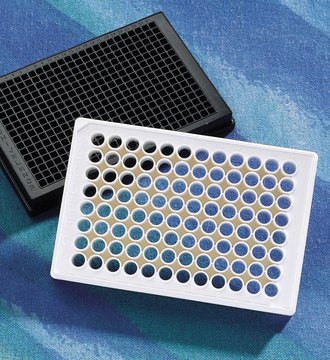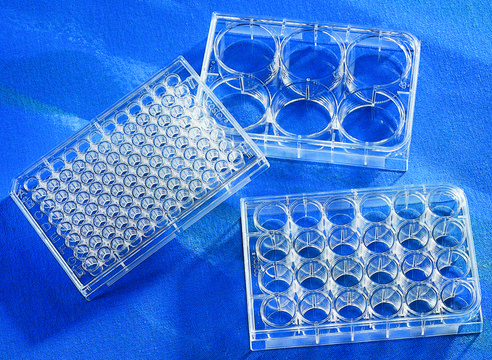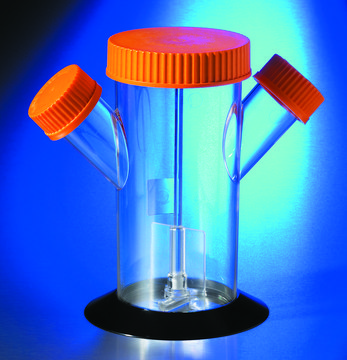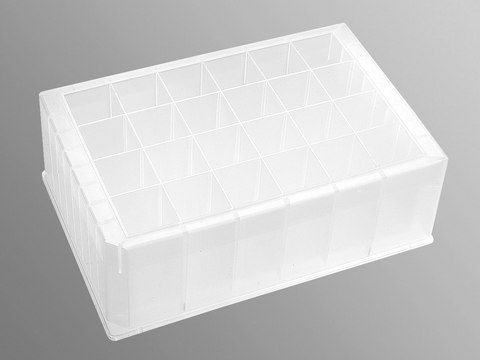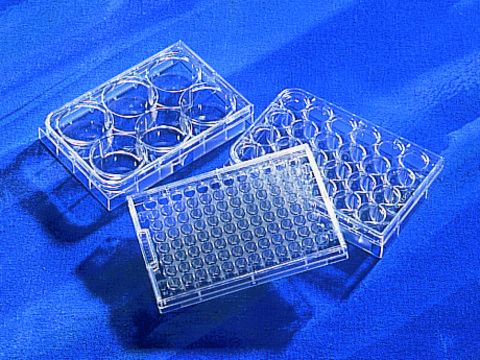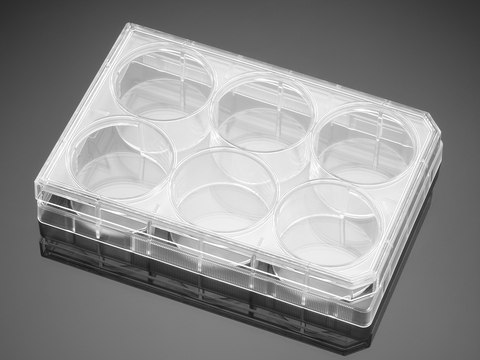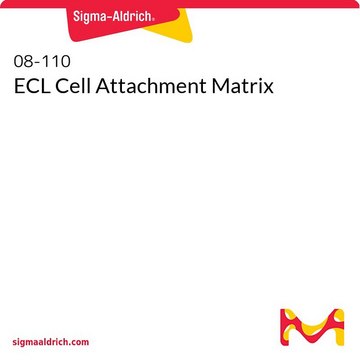CLS3843
Corning® 96 Well Poly-D-Lysine Treated Microplate
flat bottom clear, white polystyrene, bag of 20, sterile, lid
Synonym(s):
cell culture plate, multi well plates, multiple well plates
About This Item
flat bottom clear
round wells
white polystyrene
Recommended Products
material
clear wells
flat bottom clear
round wells
white polystyrene
sterility
sterile
feature
lid
skirt
packaging
bag of 20
manufacturer/tradename
Corning 3843
size
96 wells
well volume
360 μL
well working volume
75-200 μL
binding type
poly-D-lysine coated surface
Looking for similar products? Visit Product Comparison Guide
General description
- Corning® 96 Well Poly-D-Lysine Treated Microplate White walled plates fat bottoms has opaque walls to prevent well-to-well crosstalk
- 360 μL total volume, Recommended working volumes of 75 to 200 μL.
- Enhances luminescent signals and has low background luminescence and fluorescence.
- Optically clear flat well bottom permits direct microscopic viewing.
- Applicable for both top and bottom reading instruments.
- Enhanced cell attachment.
- Nonreversible lids with condensation ring to reduce contamination.
- Sterile and nonpyrogenic.
- Individual alphanumeric codes for better identification.
Legal Information
Choose from one of the most recent versions:
Certificates of Analysis (COA)
It looks like we've run into a problem, but you can still download Certificates of Analysis from our Documents section.
If you need assistance, please contact Customer Support.
Already Own This Product?
Find documentation for the products that you have recently purchased in the Document Library.
Our team of scientists has experience in all areas of research including Life Science, Material Science, Chemical Synthesis, Chromatography, Analytical and many others.
Contact Technical Service